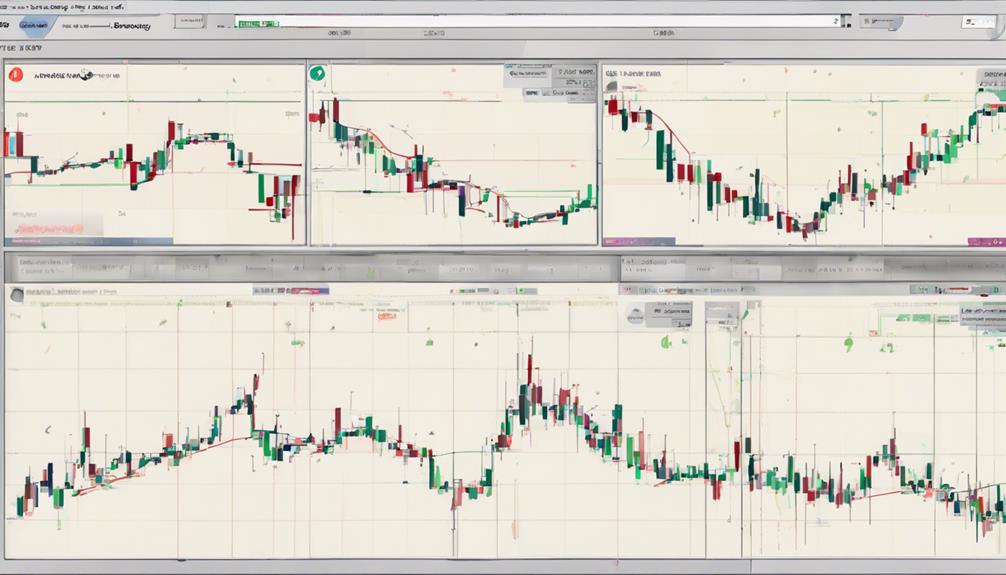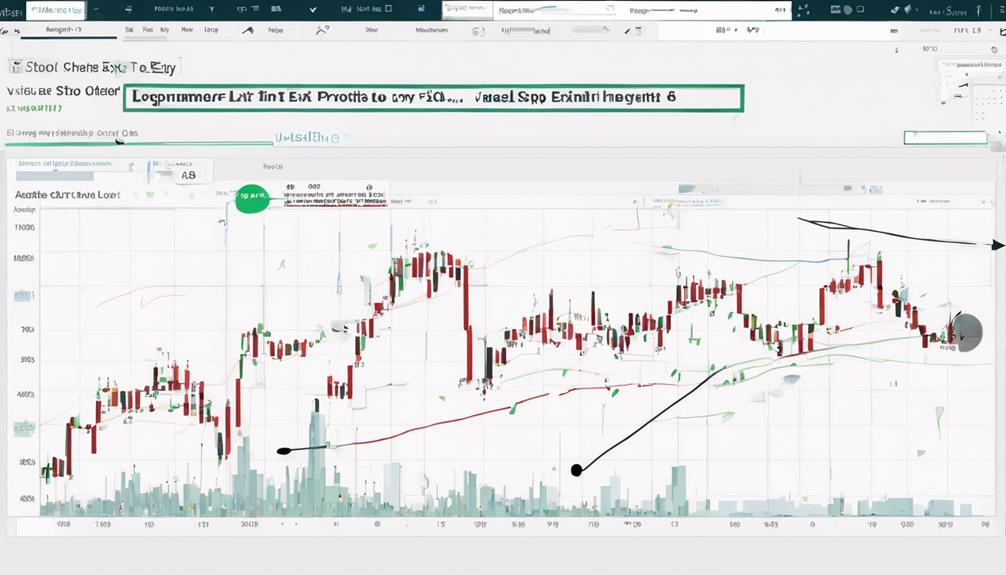To master profitable trades with RSI, you must first grasp the key principles outlined in the seven steps. Identifying high and low points in the market, effectively using the RSI indicator, and strategically entering trades are just the beginning.
But what comes next? How can these steps be fine-tuned to maximize your trading success?
Stay tuned to uncover the crucial insights that will take your RSI mastery to the next level and enhance your trading profitability.
Identifying High/Low Points
When identifying high and low points on the Relative Strength Index (RSI), traders can effectively gauge potential market conditions for making informed trading decisions. High points on the RSI, typically above 70, suggest overbought conditions, signaling a possible time to sell or take profits.
Conversely, low points on the RSI, usually below 30, indicate potential oversold conditions, presenting potential buying opportunities or market reversals. By monitoring the RSI for these high and low points, traders can assess market sentiment and anticipate trend changes, leading to more profitable trades.
Utilizing RSI as one of your key indicators can provide valuable insights into market dynamics and help you stay ahead in the trading game.
Utilizing RSI Trading Indicator

To effectively utilize the RSI trading indicator, analyze price momentum on a scale of 0 to 100 for informed trading decisions. The Relative Strength Index (RSI) indicates overbought conditions when above 70, suggesting potential sell opportunities, and oversold conditions below 30, signaling potential buy opportunities.
RSI can also diverge from price trends, indicating possible market trend reversals. Enhance trade signals by combining RSI with other technical analysis indicators like MACD or moving averages. This strategic approach helps in identifying market trends, determining entry and exit points, and developing profitable trading strategies.
Waiting for Price Confirmation

Before entering any trades based on RSI signals, ensure you wait for price confirmation to validate the signal's reliability and improve your trade accuracy. Confirming price action is crucial for identifying trends and making informed decisions. Here are three key reasons why waiting for price confirmation is essential for successful RSI-based trades:
- Avoid False Signals: Price confirmation helps filter out misleading RSI signals, reducing the risk of entering trades based on inaccurate information.
- Improves Accuracy: Waiting for price confirmation enhances the accuracy of RSI strategies, leading to more precise trade entries and exits.
- Enhances Trade Effectiveness: Patience in waiting for price confirmation after RSI signals increases the likelihood of profitable trades and minimizes the chances of entering positions prematurely.
Entering the Trade Strategically

Entering trades strategically requires careful consideration of various factors.
This includes RSI threshold levels, confirmation signals from other indicators, trend alignment, and price action analysis for optimal trade precision and profitability.
Using RSI entry points below 30 for oversold conditions and above 70 for overbought conditions can be effective.
Look for confirmation signals from other technical indicators to validate RSI signals and avoid false entry points.
Ensure alignment with the trend direction to increase the probability of successful trades.
Price action analysis can further enhance the accuracy of your entries.
Practice patience and discipline to prevent impulsive decisions, which can negatively impact trade profitability.
How Can I Use RSI Mastery to Enhance My Trading Experience?
To enhance trading with RSI tips, start by mastering the basics of the indicator. Use RSI to identify overbought or oversold conditions and potential trend reversals. Combine RSI with other technical analysis tools for confirmation. Develop a strategy that aligns with your risk tolerance and trading goals.
Implementing Stop Loss

Implementing stop loss orders based on RSI signals is crucial for managing risk and safeguarding your trading capital effectively. When considering stop loss orders with RSI mastery, remember:
- Capital Protection: Utilize stop loss orders to protect your trading capital from significant drawdowns.
- Discipline: Implementing stop loss orders based on RSI analysis promotes trading discipline and reduces emotional decision-making.
- Risk Management: Setting stop losses using RSI levels can help you exit positions during potential trend reversals, enhancing overall risk management strategies.
Frequently Asked Questions
What Are the 7 Steps to Creating a Trading Plan?
To create a trading plan, identify goals, risk tolerance, and trading style. Tailor the plan to preferred instruments and timeframes. Set entry/exit rules based on RSI signals and other indicators. Regularly review and adapt the plan for changing market conditions.
What Is the Best Strategy for RSI Trading?
To excel in RSI trading, identify overbought/oversold conditions using the 80-20 rule. Employ a 20-period RSI for swing trades and a 9-period RSI for intraday trades. Enhance signals by overlaying different RSI periods and focus on medium-term trend changes.
What Is the RSI 50 50 Strategy?
To understand the RSI 50 50 strategy, watch for RSI crossing 50 for trend shifts. Going above signals bullish moves, below indicates bearish trends. This method helps assess trend strength by the RSI's position relative to 50.
What Is the RSI 8 Strategy?
When using the RSI 8 strategy, you benefit from quicker signals for trading decisions. This approach leverages an 8-period setting on the Relative Strength Index, offering traders more sensitive and rapid responses to price movements.
Conclusion
By following the seven steps outlined in this guide, you can enhance your trading strategies and improve your profitability with RSI mastery.
The principles discussed here provide a solid foundation for making informed decisions in the market.
Take the time to apply these steps to your trading approach and see firsthand the impact they can have on your success.
Embrace the power of RSI and elevate your trading game today.
